Definition
Dermatomyositis is one of a group of muscle diseases known as the inflammatory myopathies, which are characterized by chronic muscle inflammation accompanied by muscle weakness. Dermatomyositis’ cardinal symptom is a skin rash that precedes, accompanies, or follows progressive muscle weakness. The rash looks patchy, with purple or red discolorations, and characteristically develops on the eyelids and on muscles used to extend or straighten joints, including knuckles, elbows, knees, and toes.
Red rashes may also occur on the face, neck, shoulders, upper chest, back, and other locations, and there may be swelling in the affected areas. The rash sometimes occurs without obvious muscle involvement. Adults with dermatomyositis may experience weight loss, a low-grade fever, inflamed lungs, and be sensitive to light such that the rash or muscle disease gets worse.
Red rashes
Children and adults with dermatomyositis may develop calcium deposits, which appear as hard bumps under the skin or in the muscle (called calcinosis). Calcinosis most often occurs 1-3 years after the disease begins. These deposits are seen more often in children with dermatomyositis than in adults. In some cases of dermatomyositis, distal muscles (muscles located away from the trunk of the body, such as those in the forearms and around the ankles and wrists) may be affected as the disease progresses. Dermatomyositis may be associated with collagen-vascular or autoimmune diseases, such as lupus.
Epidemiology
Dermatomyositis affects both children and adults. The incidence of DM is approximately 10–20 times lower than the incidence of lupus erythematosus, or other connective tissue diseases — systemic sclerosis or rheumatoid polyarthritis.
dermatomyositis pathophysiology
- Dermatomyositis is considered to be the result of a humoral attack against the muscle capillaries and small arterioles (endothelium of the endomysial blood vessels). Since 1966, there has been evidence supporting an ongoing microangiopathy.
- The disease starts when putative antibodies or other factors activate C3, forming C3b and C4b fragments that lead to formation of C3bNEO and membrane attack complex (MAC), which are deposited in the endomysial vasculature. Complement C5b-9 MAC is deposited and is needed in preparing the cell for destruction in antibody-mediated disease. B cells and CD4 (helper) cells are also present in abundance in the inflammatory reaction associated with the blood vessels.
- As the disease progresses, the capillaries are destroyed, and the muscles undergo microinfarction. Perifascicular atrophy occurs in the beginning; however, as the disease advances, necrotic and degenerative fibers are present throughout the muscle.
- The pathogenesis of the cutaneous component of dermatomyositis is poorly understood, but is thought to be similar to that of muscle involvement.
- Studies on the pathogenesis of the muscle component have been controversial. Some suggest that the myopathy in dermatomyositis is pathogenetically different from that in polymyositis. The former is probably caused by complement-mediated (terminal attack complex) vascular inflammation, the latter by the direct cytotoxic effect of CD8+ lymphocytes on muscle. However, other cytokine studies suggest that some of the inflammatory processes may be similar. One report has linked tumor necrosis factor (TNF) abnormalities with dermatomyositis.
Risk factors
Anyone can develop dermatomyositis. However, according to the Mayo Clinic, it’s most common in adults between the ages of 40 and 60 and children between the ages of 5 and 15. The disease affects women more often than men.
Causes of Dermatomyositis
Dermatomyositis is considered one of the connective tissue diseases, like systemic sclerosis and lupus erythematosus. Dermatomyositis is thought to be caused by microangiopathy affecting skin and muscle.
Factors that may play a part in its development are listed below.
- Genetic predisposition
- Underlying cancer (more likely in older people)
- Autoimmune defect (an immune reaction against self)
- Infectious or toxic agents acting as triggers
- Certain drugs, which include hydroxyurea, penicillamine, statins, quinidine, and phenylbutazone
Dermatomyositis symptoms
The following symptoms are common for DM patients:
- Rash on the eyelids, cheeks, nose, back, upper chest, elbows, knees, and knuckles
- Scaly, dry, or rough skin
- Trouble rising from a seated position or getting up after a fall
- General tiredness
- Inflamed or swollen areas around fingernails
- Sudden or progressive weakness in muscles in neck, hip, back, and shoulder muscles
- Difficulty swallowing (dysphagia) or a feeling of choking
- Hardened lumps or sheets of calcium (calcinosis) under the skin
Dermatomyositis rashes
If you’re experiencing any of these dermatomyositis symptoms, we’d encourage you to talk to your doctor to begin the diagnosis process. Since myositis is a rare disease, not all physicians are familiar with the signs and symptoms. If you’re struggling to find an accurate diagnosis, visiting a specialist can help.
Dermatomyositis mostly affects the muscles of the hips and thighs, the upper arms, the top part of the back, the shoulder area and the neck.
Complications of dermatomyositis
Possible complications of dermatomyositis include:
- Difficulty swallowing. If the muscles in your esophagus are affected, you can have problems swallowing (dysphagia), which can cause weight loss and malnutrition.
- Aspiration pneumonia. Difficulty swallowing can also cause you to breathe food or liquids, including saliva, into your lungs (aspiration).
- Breathing problems. If the condition affects your chest muscles, you might have breathing problems, such as shortness of breath.
- Calcium deposits. These can occur in your muscles, skin and connective tissues (calcinosis) as the disease progresses. These deposits are more common in children with dermatomyositis and develop earlier in the course of the disease.
Diagnosis and test
The process for diagnosing dermatomyositis may include:
Complete medical history and physical examination, including history of systemic diseases and careful examination to discern the pattern of muscle involvement.
Electrodiagnostic tests (EMG/NCS): Our neuromuscular neurologists assess muscle and nerve function using a machine that measures electrical signals in individual muscles and nerves. Learn more about electromyography.
Laboratory tests: Your blood is checked for muscle enzymes, antibodies that are associated with autoimmune diseases, and other possible causes of muscle weakness.
Imaging studies: You may undergo non-invasive testing like magnetic resonance imaging (MRI) to confirm muscle inflammation.
Muscle biopsy: Examination of a small sample of muscle tissue to look for abnormalities that may establish a diagnosis
Treatment and medications
Treatment will depend on your symptoms, your age, and your general health. There’s no cure for the condition, but the symptoms can be managed. You may need more than one kind of treatment. And your treatment may need to be changed over time. Treatments include:
Physical therapy: Special exercises help to stretch and strengthen the muscles. Orthotics or assistive devices may be used.
Skin treatment: You may need to avoid sun exposure and wear sunscreen to help prevent skin rashes. Your health care provider can treat itchy skin rashes with antihistamine drugs or with anti-inflammatory steroid creams that are applied to the skin.
Anti-inflammatory medications: These are steroid drugs, or corticosteroids. They ease inflammation in the body. They may be given by mouth or through an IV.
Immunosuppressive drugs: These are drugs that block or slow down your body’s immune system. These include the drugs
- Methotrexate (brand names Rheumatrex® and Trexall®)
- Azathioprine (brand name Imuran® and Azasan®)
- Cyclophosphamide (brand name Cytoxan®)
- Chlorambucil (brand name Leukeran®)
- Cyclosporine (brand name Sandimmune®, Gengraf®, and Neoral®)
- Tacrolimus (brand name Astagraf XL®, Hecoria®, Prograf®)
- Mycophenolate (brand name CellCept®, Myfortic®)
- Rituximab (brand name Rituxan®)
Immunoglobulin: If you have not responded to other treatments, these drugs may be given. They have donated blood products that may boost your body’s immune system. They are put directly into your bloodstream through an IV.
Surgery: Surgery may be done to remove the calcium deposits (calcinosis) under the skin if they become painful or infected.
Talk with your health care providers about the risks, benefits, and possible side effects of all medications.
 Diseases Treatments Dictionary This is complete solution to read all diseases treatments Which covers Prevention, Causes, Symptoms, Medical Terms, Drugs, Prescription, Natural Remedies with cures and Treatments. Most of the common diseases were listed in names, split with categories.
Diseases Treatments Dictionary This is complete solution to read all diseases treatments Which covers Prevention, Causes, Symptoms, Medical Terms, Drugs, Prescription, Natural Remedies with cures and Treatments. Most of the common diseases were listed in names, split with categories.
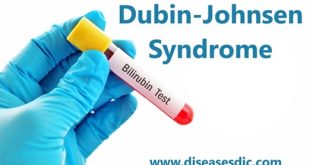

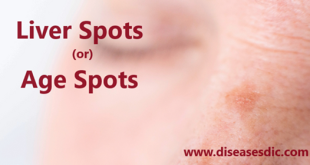
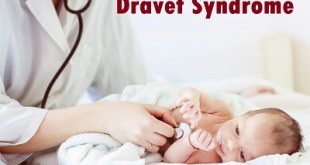
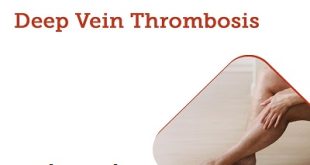

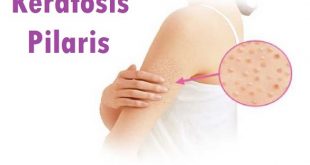

which drug can someone use to treat it
The two most common medications for dermatomyositis are azathioprine (Azasan, Imuran) and methotrexate (Trexall). Rituximab (Rituxan). More commonly used to treat rheumatoid arthritis, rituximab is an option if initial therapies don’t adequately control your symptoms.
what other medicine can I use to stop the itching? I need help please.
Anti-itch creams and lotions containing camphor, menthol, phenol, pramoxine (Caladryl, Tronolane), diphenhydramine (Benadryl), or benzocaine can bring relief. Some cases of itching will respond to corticosteroid medications.
We advise you to consult a dermatologist for an appropriate prescription of medicine.